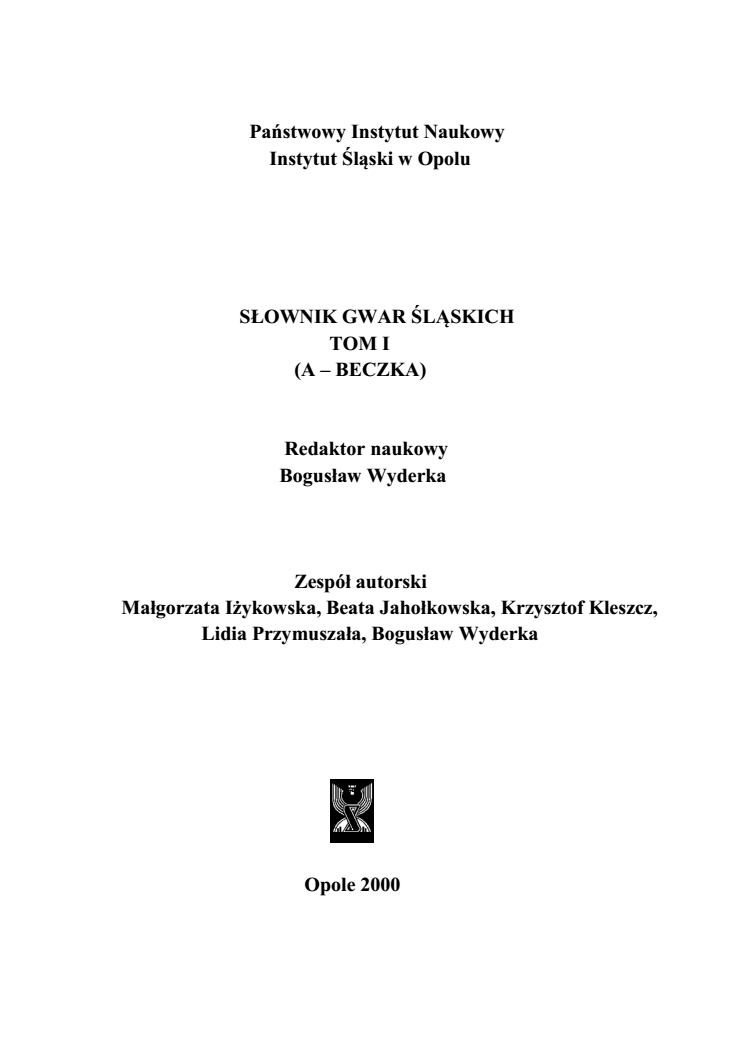
Słownik Gwar Śląskich, tom I (A - BECZKA)
"Glossary of Silesian Dialects" is the result of many years of scientific work of several generations of linguists from the Silesian Institute in Opole, Poland.
More...We kindly inform you that, as long as the subject affiliation of our 300.000+ articles is in progress, you might get unsufficient or no results on your third level or second level search. In this case, please broaden your search criteria.

"Glossary of Silesian Dialects" is the result of many years of scientific work of several generations of linguists from the Silesian Institute in Opole, Poland.
More...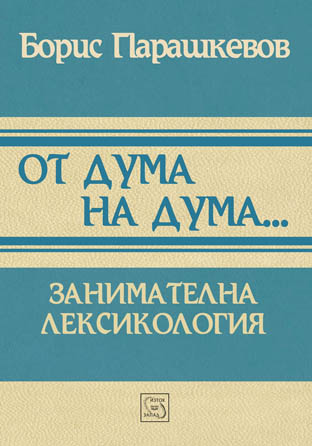
One of the parts of linguistics is the science of words called lexicology. Lexicology is the part of linguistics which studies words. This includes their nature and function as symbols, their meaning, the relationship of their meaning to epistemology in general, and the rules of their composition from smaller elements. Lexicological issues are discussed and elucidated in general manuals and in specific scientific developments, and their results find a generalization and practical application in dictionaries, i.e. in lexicography. This lexicon is claimed to be a practical complement to the theoretical formulations of lexicology and corrective sort of data in lexicography, where the etymological reference is rarely comprehensive and not always reliable. In the book, in the form of 357 dictionary articles and with the apparatus of the lexicological categories in front of the reader, many specific questions related to the origin and history of some of the words in the Bulgarian language are discussed. The explanatory notes draw information from the achievements of three other linguistic areas: etymology, semantics and word formation.
More...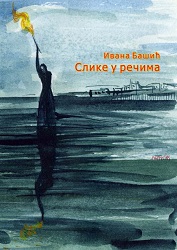
Images in Words. Lexical Iconicity of the Serbian Language in the Context of Slavic Mythology: Metaphors of Life and Dead is the first study of the relationship between lexical iconicity and the linguistic world picture in the Serbian language. The research is based on the premises that language is a specific representation of the inner form of thinking, which is indicative of a particular world-view; that semantic systems change in time, but in that passage from complex to categorical thinking the traces of complex thinking stay preserved in lexical iconicity and reveal themselves in the articulation of repressed semantic components in the given context; that not only metaphor and metonymy play an important role in the transformations of semantic systems as mechanisms of understanding and transposing ideas from one field of knowledge to another, but also iconicity and the existence of a number of universal imaginative schemes.
More...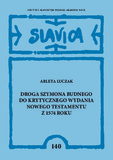
This work is devoted to the translations of the New Testament by Szymon Budny – an eminent sixteenth-century Polish writer, and outstanding linguist and biblical scholar of the Reformation. At first a Calvinist, Budny then became an Arian activist. The book's its purpose is to describe the changing progression taking place in the three editions of Budny’s translations of the New Testament from 1570, 1572 and 1574. To this end, I perform a philological analysis of these texts in comparison to other biblical Polish translations of the 16th century (mainly to the Calvinist Brest Bible of 1563 and to the 1568 New Testament, which was modelled on it) as well as to Greek and Latin texts. The dynamic process of shaping the changes in succeeding translations of the New Testament, which Budny constantly improved and perfected, is most evident in his critical edition of the New Testament from 1574. Here, the author was able to present the results of his search for the authentic, i.e. correct and error-free, original text, a search which he based on multiple sources. He also expressed his position regarding the method of translation and theological interpretation (which corresponded to his confession).
More...
The book deals with changes in words meanings – and especially, the regularities therein – as exemplified by selected Proto-Slavic-derived adjectives denoting human traits, whose semantic development has been analysed since their emergence in the Proto-Slavic period until today. The observed regularities served as the basis for an outline dictionary of semantic motivations, which might be useful when considering etymologies of other (not just Slavic) words from this conceptual field. The book features an extensive theoretical introduction, discussing: the rules of establishing meanings in a proto-language, works devoted to semantic reconstruction of languages, and parallels in semantic development.
More...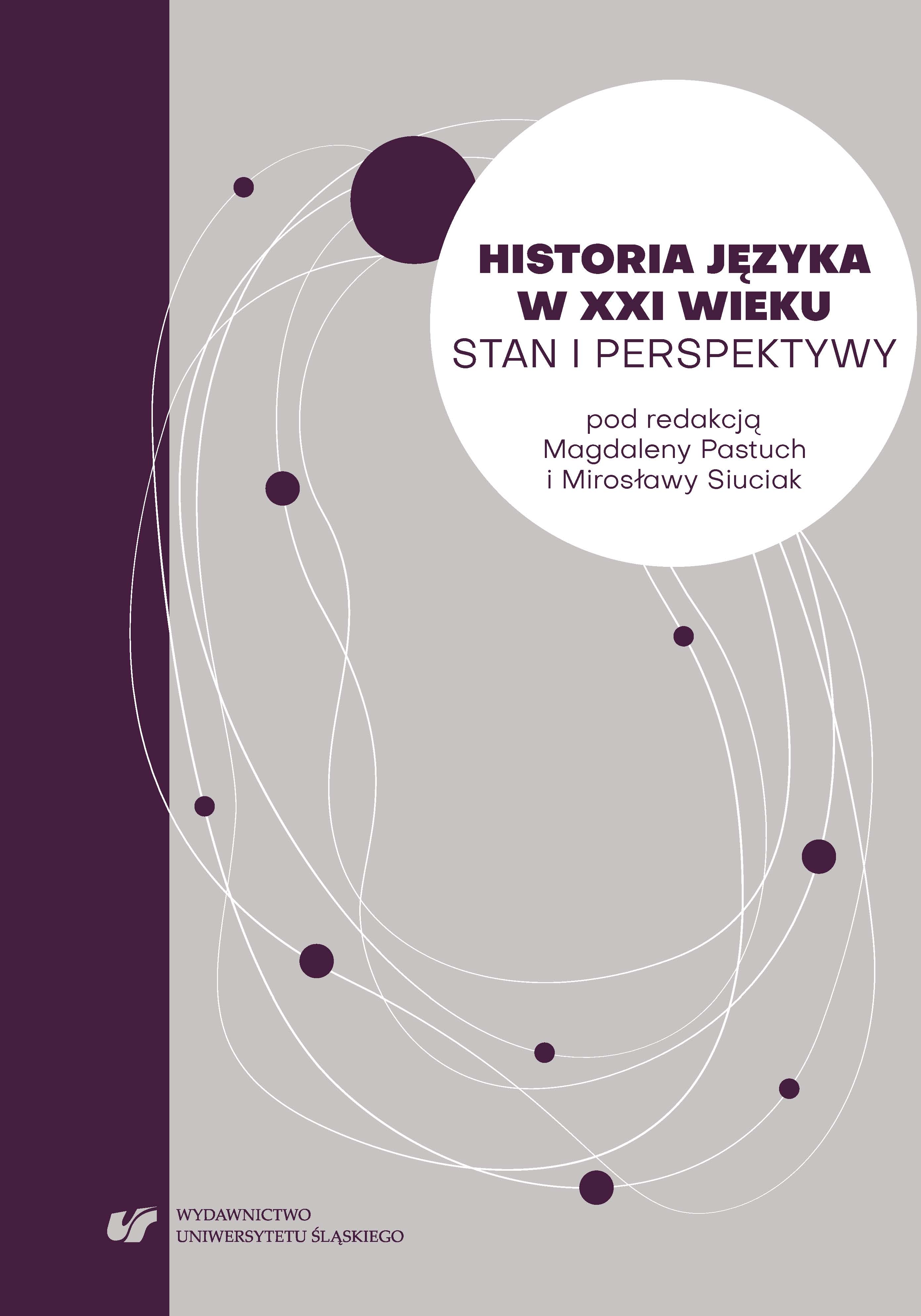
The volume constitutes the gleanings of the 1st Congress of the Historians of (a) Language which was held in Katowice. The purpose of this scholarly meeting was to present the scholarly accomplishments of historical linguistics which were achieved heretofore and to present the most important research plans of the discipline. Almost 150 scholars who represent this field participated in the Congress. The participants engaged various themes which arranged themselves in the following subject blocks: I. The methodological dilemmas of modern diachronic linguistics II. Historical-linguistic research and the universal problems of linguistics III. The sources which are used in diachronic research IV. Lexicology and lexicography V. The regional Polish language and the dialects VI. Communication. Genology. Stylistics VII. The historical-linguistic knowledge in university education The volume features a very important supplement in the form of a transcript and a report of two panel discussions which focused on the following problems: 1. “The research and methodological challenges of historical linguistics”; 2. “The teaching-related tasks of historians in reference to the national communicative community in the past and in the present”. The opinions of the representatives of the scholarly community about the position of diachronic linguistics in linguistic research, the opinions about the fundamental problems and dilemmas are certainly relevant to all people who are interested in the progress of the research in (a) language. The value of the present volume is further enhanced by the last part which is devoted to the events which celebrated the conferring of the name of a distinguished linguist, Irena Bajerowa, to the Institute of the Polish Language of the University of Silesia. The opinions of the Friends, Family Members and the Students which were preserved represent the scholarly and, at the same time, the cordial nature of this significant event.
More...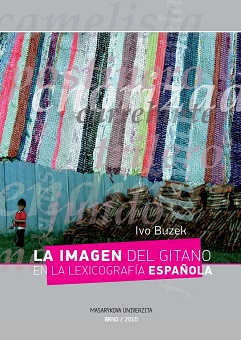
The monograph deals with the history of treatment that receive lexical units of Gypsy origin in Spanish monolingual dictionaries, especially in the editions of the normative Spanish Royal Academy dictionary of the Spanish language. The issue is being studied from the quantitative as well as qualitative point of view, i.e. the evolution of definitions, lexicographical marcs and etymological notes. Special attention is paid to the evolution of their treatment in the microstructure. The results from Spanish Royal Academy dictionary are then compared with the treatment that receive these words in the dictionary of contemporary Spanish by Manuel Seco et al.
More...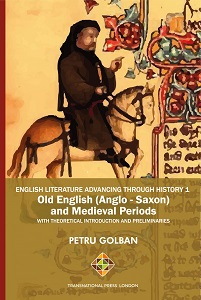
It appears that literary work possesses eternal temporal validity due to its autonomous aesthetic value, whereas criticism provides points of view having temporary and transitory significance. Despite such claims, the vector of methodology in our series of books, dealing with the history of English literature, relies on Viktor Shklovsky, T. S. Eliot, Mikhail Bakhtin, and especially Yuri Tynyanov, whose main reasoning would be that literature is a system of dominant, central and peripheral, marginalized elements – to us, “tradition” (centre) versus “innovation” (margin) engaged in a “battle” for supremacy, demarginalization, and the right to form a new literary system – and the development or historical advancement of literature is the substitution of systems. Roman Jakobson and French structuralism, on the whole, later Linda Hutcheon, with her “system” and “constant”, and Bran Nicol with the “dominant”, to say nothing about Itamar Even-Zohar and his theory of polysystem, to a certain extent Julia Kristeva, and even Homi Bhabha – as well as our humble contribution, by means of the books in the present series, we would like to believe – maintain Tynyanov’s line of thinking and concepts alive, which have developed and emerged nowadays more like a kind of “neo-formalism”. Contents | Preface | Introduction: Approaching Literary Practice and Studying British Literature in History | Preliminaries: Learning Literary Heritage through Critical Tradition or Back to Tynyanov | The Idea of Literature as a Critical Concern in Classical Times and in the Middle Ages | Old English (Anglo-Saxon) Literature | Old English (Anglo-Saxon) Poetry | Lyrical Poetry: Caedmon, Cynewulf, Anonymous Poems | Epic Poetry: Beowulf Within and Beyond a Great Tradition |Old English (Anglo-Saxon) Prose | The Venerable Bede and Alfred the Great | The Anglo-Saxon Chronicle and the Rise of a National Consciousness | Medieval LiteratureThe Anglo-Norman Literature | The Medieval Romance: Between Imitation and Originality | Geoffrey Chaucer and His Epoch | The Canterbury Tales: The Aesthetic Monument of Medieval Literature | The Fifteenth-Century Literature | English Drama in Its Incipient Stage | Conclusion: The Beginnings of British Literature | References and Suggestions for Further Reading | Index
More...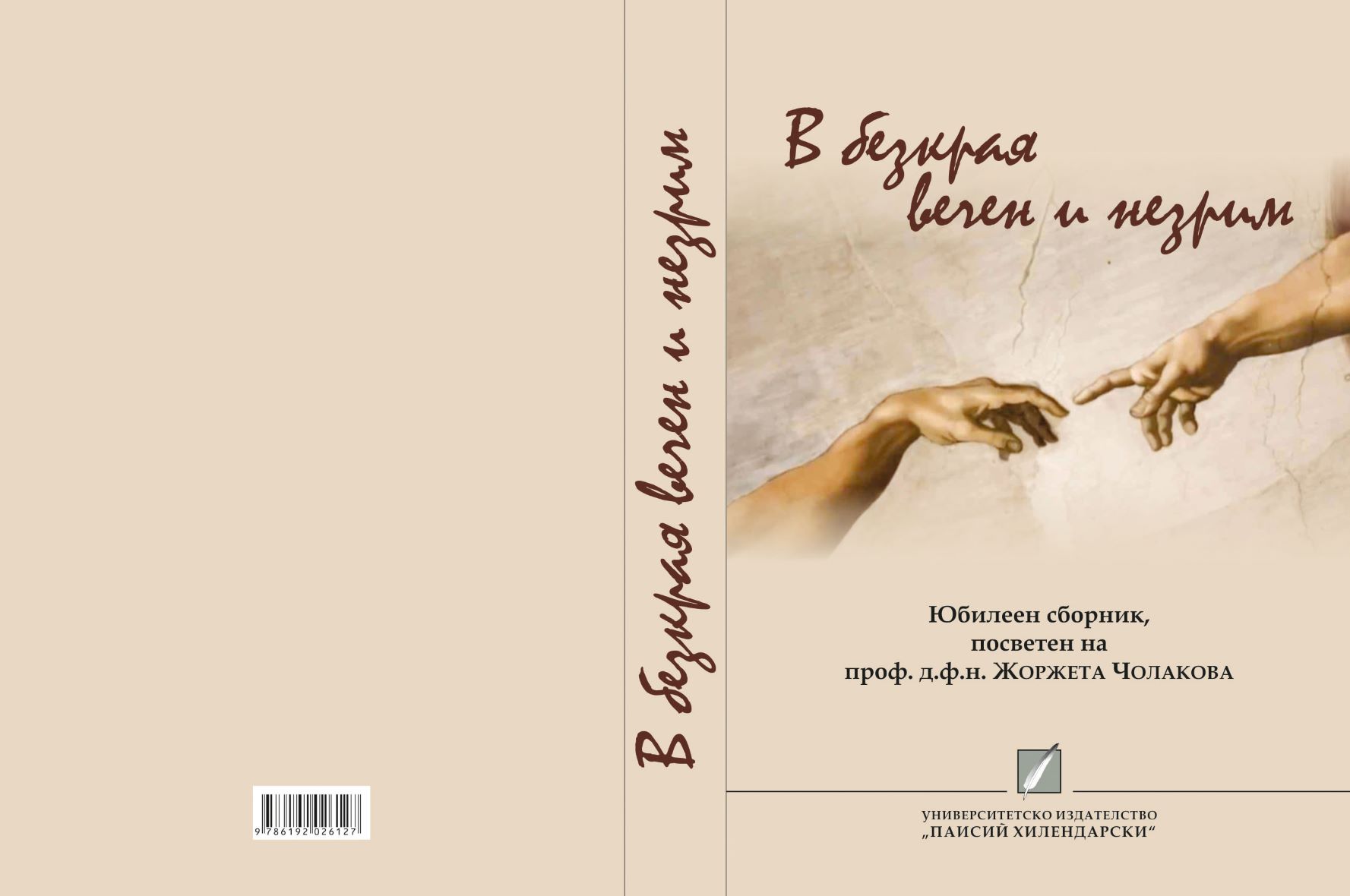
This anniversary collection is dedicated to Prof. DSc. Zhorzheta Cholakova’s research contributions. She works in the fields of Czech literature, Comparative Slavic Literary Studies, Translation and Translation Reception, and Literary Theory and publishes in Bulgarian, Czech and French. Contributors to this book include academic researchers from Bulgaria and abroad (Czech Republic, France, Republic of Srpska and Great Britain) who work in the above-mentioned fields or whose research has common ground with topics and problems explored by Prof. Cholakova. The texts are in Bulgarian, Czech, English and French.
More...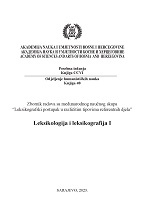
Međunarodni naučni skup “Leksikografski postupak u različitim tipovima referentnih djela” održan je u Sarajevu 27–28. maja 2022. godine. Organizator skupa bio je Centar za leksikologiju i leksikografiju Odjeljenja humanističkih nauka u saradnji s Federalnim ministarstvom obrazovanja i nauke, a domaćin Akademija nauka i umjetnosti Bosne i Hercegovine. Skup je otvorio akademik Muris Čičić, predsjednik ANUBiH-a. Zbog pandemije koronavirusa Organizacioni odbor odlučio se za hibridno odvijanje skupa: uživo i onlajn. U radu skupa sudjelovali su lingvisti iz Bosne i Hercegovine, Bugarske, Crne Gore, Poljske, Rusije, SAD-a, Slovenije i Srbije. Podneseni referati i plodna diskusija pokazali su savremeno stanje i dostignuća leksikološko-leksikografskih istraživanja u Bosni i Hercegovini, srednjojužnoslavenskom i drugim (južno)slavenskim jezicima i šire. U ovom zborniku objavljuju se radovi koje su autori blagovremeno dostavili Organizacionom odboru. Prilozi obrađuju različite teme u referentnim djelima i korpusima. Iz raznih uglova i koristeći različite metode propituju jezičku prošlost i sadašnjost, dijalekatsku i terminološku leksiku, savremene opisne i specijalne jednojezičke i dvojezičke rječnike te enciklopedije. Prilozi nisu grupirani tematski; nižu se abecednim redom prema prezimenima autora. U vrijeme održavanja skupa upriličeno je gostujuće predavanje prof. dr. Danka Šipke (Arizona, SAD) o temi “Geografija riječi”. Zbornik okončava tekstom tog predavanja. Zahvaljujemo autoricama i autorima priloga, recenzentici i recenzentu te svima koji su pomogli u organizaciji skupa i izdavanju zbornika. Nadamo se da će zbornik naći svoje čitaoce među lingvistima, etnolozima, antropolozima i u širem krugu zainteresiranih za leksikološko-leksikografske teme.
More...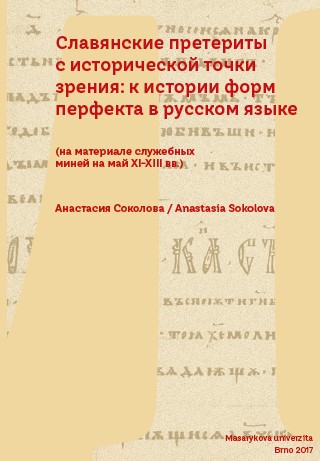
The present monograph is engaging to the development of the analytical construction, which is traditionally called the perfect tense and which served as the basis for the universal preterit of the present Russian. As the primary source of materials were chosen Slavonic liturgical Menaions for the month of May from 11th to 13th centuries (Putyatina Mineya, 11th c., Menaion Sof. 203, 12th c., Menaion Sof. 204, 13th c.). Since the examined texts are translations from Ancient Greek, also the Greek Mineje was used to analyse the units under examination.
More...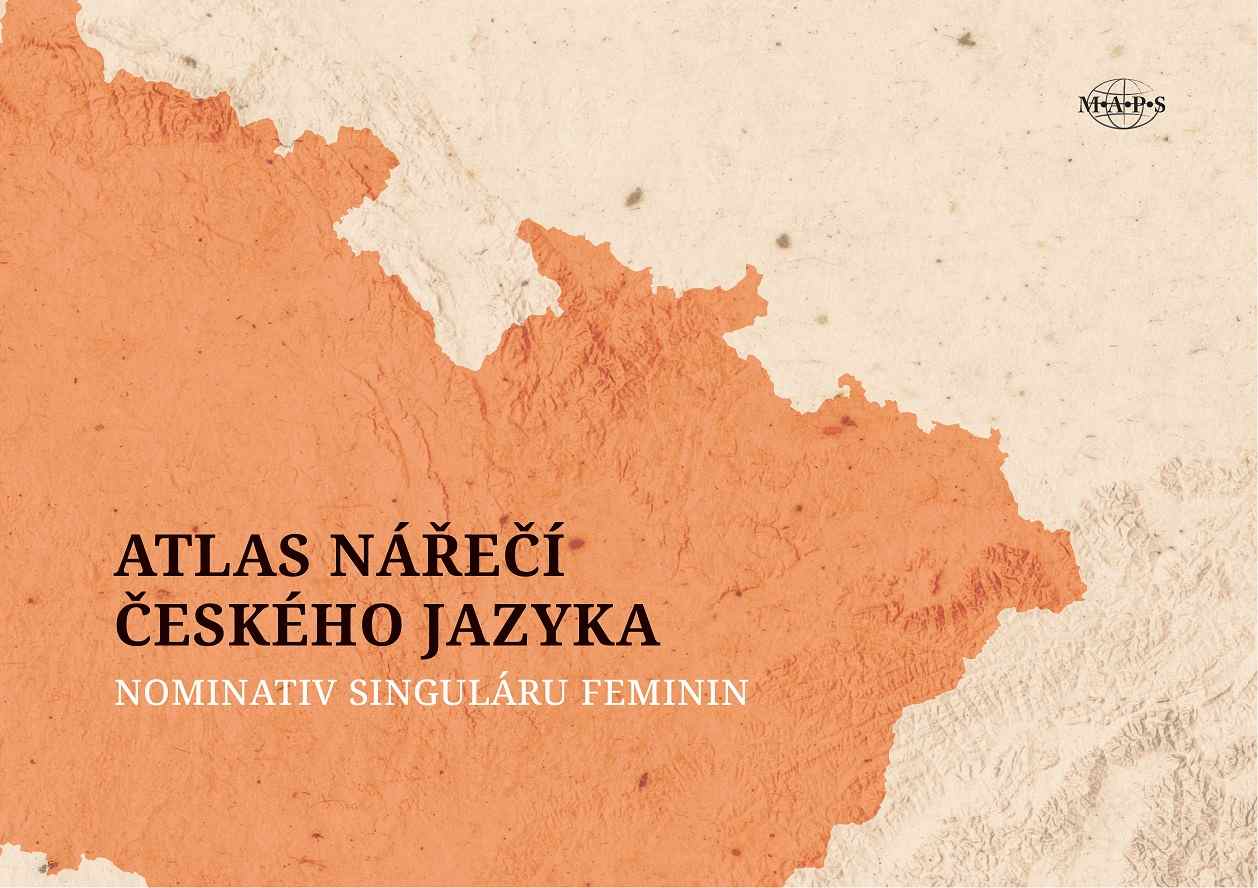
The Atlas of Czech Dialects - Nominative Singular Feminine is the result of an interdisciplinary collaboration between experts from the Dialectology Department of the Institute of Czech Language of the Czech Academy of Sciences and experts from the Department of Geoinformatics of the Faculty of Science of Palacký University in Olomouc. The Atlas presents not only the dialectal phenomena that are declining and disappearing, but also the phenomena that are still alive. The main analytical dialect maps show the morphological differences in the territory of the Czech national language. The accompanying maps of spelling variations illustrate the overall territorial picture of the word form under study. In addition to the dialect maps and brief expert dialectological comments, the atlas contains texts describing the realities of former rural life, farming methods and customs, infographics, links to audiorecords and illustrative images created by artificial intelligence tools. The expert explanations are complemented by rich dialectal material, while the popular format of the texts ensures accessibility to a wide range of people interested in our dialect. Data from the Questionnaire for Research on Czech Dialects, processed into thematic maps, are brought to life by photographs taken by dialectologists half a century ago during field research.
More...
This monograph is the third and last volume of the critical edition of the linguistic papers of Ivan Poldauf, a prominent Czech linguist and lexicographer, the founder of English Studies at Palacký University Olomouc, and later a professor at Charles University in Prague. Ivan Poldauf (15 September 1915 – 9 August 1984) was an Anglicist and a Bohemist whose scope of interests was incredibly broad, ranging from theoretical linguistics (his works cover all levels of language representation) to applied linguistics. The third volume comprises his works published in English, covering 34 years of his career between 1950 and 1984.
More...
This updated edition of the publication provides an insight into Dutch philology with a focus on linguistics, including the latest scholarship on the Dutch language. The introductory chapters provide a summary of current data concerning the use of Dutch in the world and a characterization of Dutch in terms of the genetic classification of languages, including a brief history of the Dutch language with regard to the process of language standardization and developmental trends. Furthermore, the book introduces the selected linguistic disciplines (phonetics and phonology, morphology, syntax, lexicology and lexicography, pragmalinguistics), mainly on the basis of examples of various linguistic phenomena from contemporary Dutch. The book also includes a discussion of Dutch in contact with other languages and the characteristics of different varieties of contemporary Dutch. The book also includes an overview of the history of non-Dutch studies, both in the Dutch language area and in the Czech Republic and Slovakia.
More...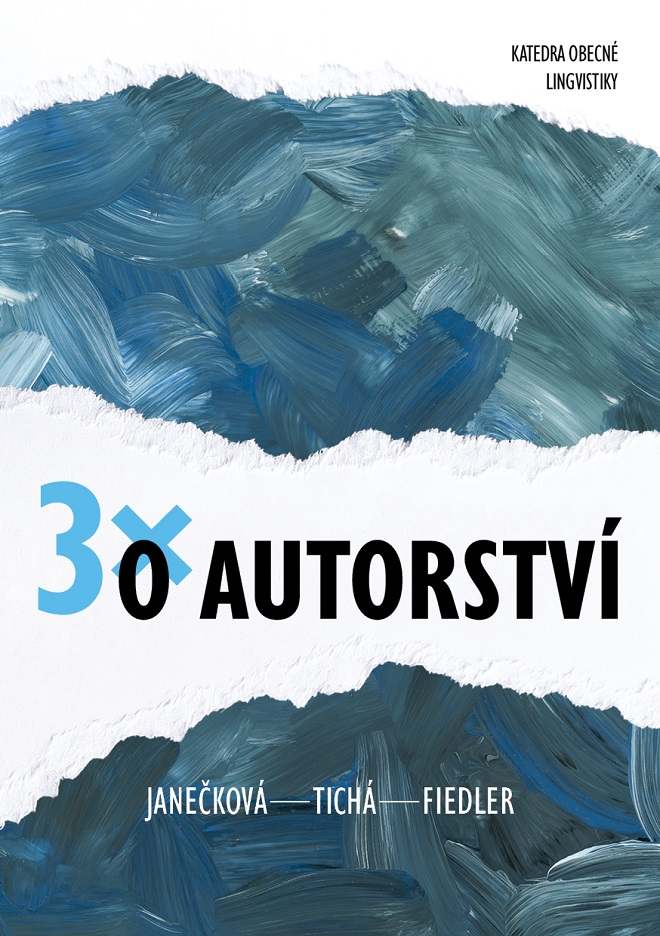
From a mysterious text from the 15th century through authorship attribution in internet communication to the analysis of prefixes in forensic linguistics. That is Thrice About Authorship – a book of three student works that combines forensic linguistics and the search for the origin and authors of texts. The first part discusses the methods used to determine the origin of the Voynich Manuscript – a mysterious text written in an unknown script. The second part seeks to say whether it is possible to distinguish the authors of comments from news servers, using methods that enumerate selected linguistic features. The third part also falls into the field of forensic linguistics – it examines the possibility of using the frequency of prefixes to differentiate text writers.
More...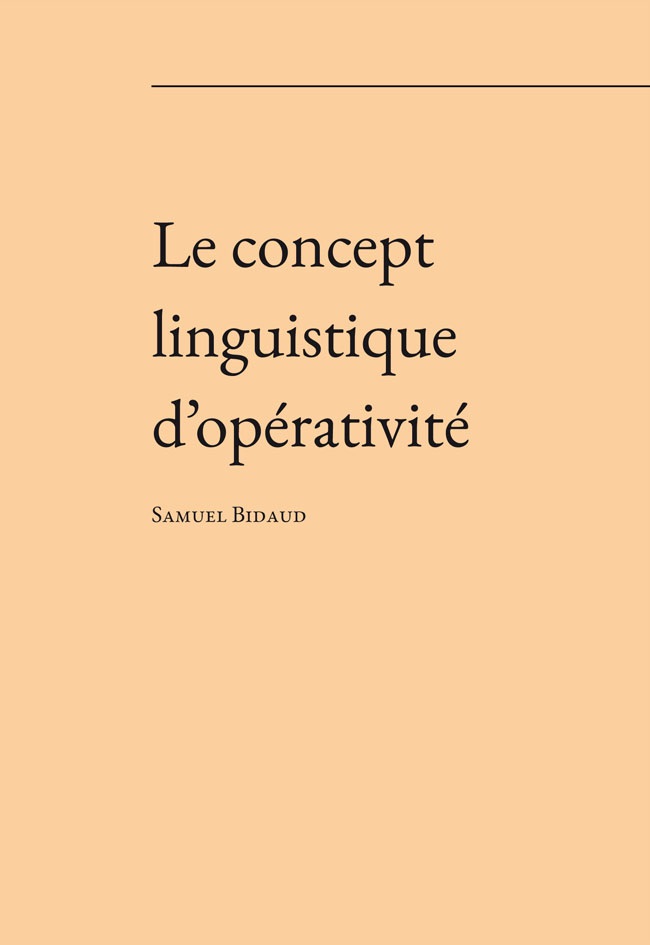
The concept of operativity is fundamental for modern and contemporary linguistics. However, its genealogy, its main principles, and its possible applications to other fields have not been explored until now. This book shows at first to which extent the notion of operativity is central to three main linguistic theories of the 20th century: the Psychomechanics of Language of Gustave Guillaume, the Structural Syntax of Lucien Tesniere, and the Transformational Generative Grammar of Noam Chomsky. The second part of the book is dedicated to the Czech language and studies, within the frame of operative linguistics, two parts of speech, the noun and the verb. The last part applies the concept of operativity to literature by analyzing In Search of Lost Time.
More...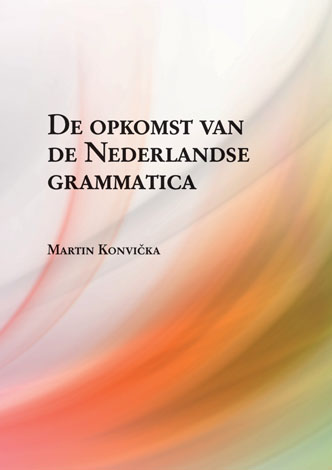
Grammaticalization has received a great deal of attention in recent decades. This paper reflects on the debates and uses their results to look at the processes in Dutch. The author understands grammaticalization as those processes that lead to the emergence of new or change in existing grammatical structures. The thesis contains three thematic units. The first illuminates the development of thinking about grammaticalization in a philosophical and linguistic context from the 19th century to the present day. It deals with the understanding of grammaticalization processes in the pre-structuralist conception of linguistics, as well as the relations of generative linguistics to the study of grammaticalization. The second part focuses on a critical discussion of the main themes in the current literature on grammaticalization. In the third part, theoretical accounts of grammaticalization are illustrated by means of Dutch.
More...
This book has grown to a large extent out of my lectures on the history of the German language. Since, when conceptually designing the lecture courses on the history of the German language, I generally start from the premise that the diachronic data conveyed in philology classes should be used for the purpose of demonstrating the development and systematics of contemporary German, it is only natural that the presentation has a second, equally important focus alongside the narrowly linguistic-historical focus, which is committed to synchrony. By illuminating the linguistic-historical facts with regard to certain morphological special classes of contemporary German, the basis is created for a synchronic classification of the verbal inflection types in German, taking into account the diachronic specifics of their form formation. The two-pronged problem and task definition broadens the target audience of the book, so that it is aimed at students and teachers of German philology, but at the same time also at learners and teachers of German as a foreign language. Of course, this book is also aimed at all those who, for whatever reason, want to understand specific linguistic phenomena of the present and grasp causal relationships.
More...
Tatian is an early Christian writer - an apologist from Assyria from the 2nd century, a student of St. Justin the Martyr. He is the author of the first evangelical harmony (Diatessaron)1 probably in the Syriac language2, which was introduced into liturgical use in the Syrian Church and only later replaced by the four separate Gospels. In 546, Bishop Victor of Capua initiated a translation of Tatian's Gospel harmony into Latin. It is assumed that the Latin Codex reached Fulda via Boniface. The translation from Latin into the East Frankish dialect was apparently a joint effort3 of the monastic school under Abbot Hrabanus Maurus, who was a teacher at the monastery of Fulda until 822 and then abbot. Since the 10th century, the first evangelical harmony (Diatessaron) was translated into Latin. The 171-page manuscript Codex G № 56 is located in the Abbey Library of St. Gallen in Switzerland since the 18th century. The Latin and Old High German texts of the Gospel Harmony are arranged in two parallel columns - the Latin text on the left and the Old High German on the right. According to the editor of the Tatian Gospel Harmony in Latin and Old German, Eduard Sievers, despite some minor deviations, there is no doubt that the Latin source of the Old High German translation of Codex Sangallensis 56 is the Latin text from the 6th century revised by Victor of Capua (the so-called Codex Bonifatianus 1 of the Hessian State Library in Fulda, also Codex Fuldensis) ist.4
More...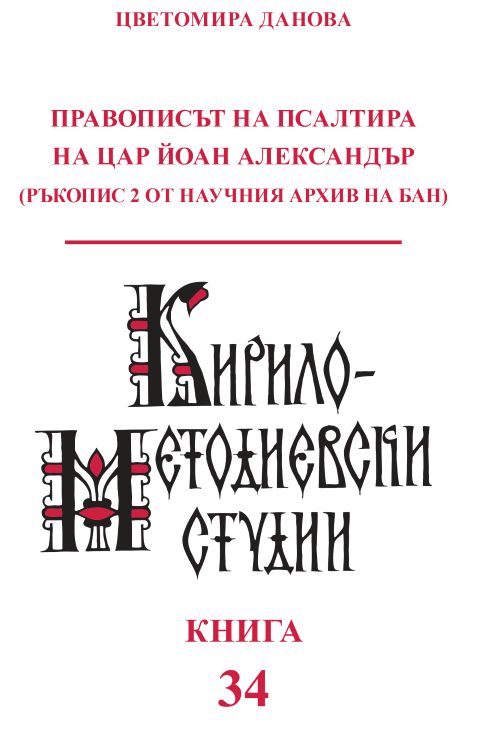
The monograph is dedicated to the orthographic features of the Sofia commentated Psalter from 1337 (MS NA-BAN 2), also known as the Psalter of Tsar Ivan Alexander. The aim is to describe the orthographic practices of each identified scribe in as much detail as possible and compare the general and specific characteristics of the different orthographic types they followed.A detailed analysis has been conducted on the following graphemes and allographs used by the copyists: е (є), ꙃ (ꙅ, ѕ), (і, ї), о (ѻ, ѡ, ꙩ, ) ѹ (, ), ъ, ь, ы, ѫ, ѭ, ѧ (ꙙ), ѩ (ꙝ), ѣ, ꙗ, , ѯ, ҁ, ѳ, у/ѵ, ѱ. The study also examines the use of the epenthetic l, supralinear signs, and the orthography of Greek loanwords. Observations on the orthography of the manuscript are based on a comprehensive excerpting of material according to the specified criteria, including from the two folios of the codex that are part of P. I. Shchukin’s collection in the State Historical Museum in Moscow (GIM, Shchukin 3). In four chapters, the orthographic characteristics of each of the four scribes involved in the creation of the manuscript are presented sequentially and in detail. The orthographic features of a small excerpt identified with a fifth handwriting are also examined separately. Three appendices illustrate the use and distribution of selected graphemes and allographs in the codex, as well as the orthography of personal and geographical names in an Old Bulgarian-Greek index with lemmatization and in two lists: Old Bulgarian-Greek and Greek-Old Bulgarian. The present study reveals four orthographic systems that combine characteristics typical of the period with individual orthographic habits. Many orthographic rules are not consistently applied, exhibit a non-mandatory nature, and are in the process of development and codification, which corresponds to the pre-Euthymian period during which the manuscript was created (1337). Despite the collective effort in the creation of the codex, there is no unified or comprehensive orthographic concept; each scribe retains and applies their individual training and background during the process. This provides additional insight into the working practices in literary centers during the first half of the 14th century and contributes to a clearer understanding of the different types of Middle Bulgarian orthography, particularly those associated with pre-Euthymian orthographic models and manuscripts written for or commissioned by Tsar Ivan Alexander.
More...